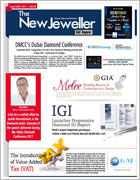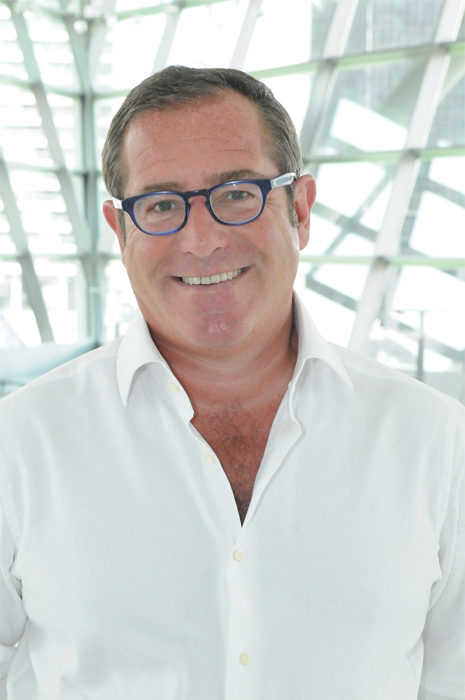
 |
|
| Home Technology / Education Events & News Archives Designs e - NewsLetter |
|
Peter Meeus calls for a unified effort to tackle Uncertainties in the Diamond sector
Excerpts of the speech delivered on the first day of Dubai Diamond Conference 2017
 Mr.Peter Meeus, Chairman -
Mr.Peter Meeus, Chairman - Dubai Diamond Exchange The organization of a conference is always a challenge. In the past, we have done many and we have always tried to upgrade our model and adapt it to new challenges. This conference will cover many aspects of the trade from purely diamond-related matters like the issue of lab-grown diamonds to a broader agenda of ethics and sustainability. This first day will be mainly focused on the broader agenda. It is a good thing to have CSR being taken more seriously. It did not exist when I entered the business. I however come from another age. One of my first bosses, Benjamin Bonas called me in his room when I joined in 1990 and said: “Listen Peter, you are in business now and there’s only 1 thing that matters: It’s all about the MONEY. For the res; Just be aware that for us Nicky Oppenheimer is GOD and the DTC-Sales Director is the son of God.” As Chairman of the Dubai Diamond Exchange and a privileged observer of SMEs in the diamond trade for almost 30 years, I have to confess that when I was in Antwerp 2 weeks ago, I had the feeling that it was more than ever about the money and that the house was on fire. The trade was in a standstill mode. What makes this matter concerning is that this company was not just an ordinary company active in the diamond trade. Up until very recently, it was a sightholder of the main rough producer. The grandfather of one of the founders was the inventor of the “ideal cut” about a 100 years ago and at the same time President of the Antwerp Diamond Bourse. His father was the master cutter of the world-famous “centenary” diamond cut in 1988. This company was not known for any kind of monkey business. It had a good reputation, it had a high standing, so what went wrong? The default happened against the backdrop of a turbulent market. Polished diamonds overall are still going through rough times. Mercury’s price index is down for the 32nd consecutive month; the IDEX polished price index is at its lowest point since December 2010; and Rapaport states that prices of 1-carat rounds are down 7.1% year-over-year. The picture is clear. According to a Tacy-Pharos Beam Study, for five years in a row, the industry’s global polished diamond sales have followed a downward trend. Commencing in 2011, when sales peaked at $22.6 billion, this figure gradually declined to $18.7 billion in 2016 – registering a 17% accumulative decline. According to the same study, the diamond jewelry market is losing its share of the consumer’s luxury wallet. The growth of diamond jewelry retail sales are said to lag dramatically behind (nominal) global GDP growth. Diamond jewelry retail sales, since 2007, have fallen steeply behind inflation indices. Diamond jewelry retail sales have risen by merely some 130%, while GDP rose by 240%. Traders on the market say they are already feeling the fallout: people are nervous, morale is plummeting, trust levels are low, and companies are being cautious in their dealings with other companies. The outcome is that payment terms on new transactions are shorter, liquidity in the market is an issue – some traders only sell for cash – and many are operating under the assumption that matters will further deteriorate, as all are waiting to see just who will be affected. Some diamond dealers have such low cash reserves that others won’t do business with them. In May, AIG Inc., which insures many in the industry, didn’t renew cover for at least one of the biggest dealers, according to an insider. Two of the biggest lenders to the diamond traders, SCB and KBC, are seemingly trying to exit the business. The question we should all ask ourselves: “How did a trust-based industry, wholly dependent on trust-based financing, get to such a calamitous reality? The writing has been on the wall for quite a while. The lack of any meaningful profitability, and the unstable, if not long-term declining, polished diamond price trends have made the repayment of hundreds of millions of debts questionable. That’s what we hear, not as gossip but as accidents yet to happen. It is about time to ask a simple question: How is this possible? Is it – as some argue – due to reckless speculation of traders? People argue money was siphoned out of the industry and invested into other assets, such as real estate and equities, because those areas were more profitable. So, they say the value that companies were willing to pay for rough diamonds became heavily exaggerated, as the value in diamonds was no longer about manufacturing them into polished, but was rather linked to getting cheap financing that could be invested elsewhere. But is that the only reason and more importantly, is there an underlying structural issue? This, I am sure, we will address in detail tomorrow in the panels but I thought it the right moment to set the tone of what will be a difficult debate. Secondly, I want to share some first thoughts on 2 other topics of importance. First of all on the issue of synthetic diamonds and we are particularly happy to have Jean-Marc Lieberherr amongst us as he has taken up the role of our savior, then on the VAT. The issue of undisclosed synthetic diamonds and the disclosure of synthetic and treated natural diamonds have become worrisome with the increased production of HPHT-CVD diamonds. In the last two years, the availability of this new type of diamonds has become abundant. Experts believe that as of today, about 3% of the worldwide consumption is man-made. Facilities in the Far East, Russia and China are said to be producing enormous amounts of smaller size CVD and HPHT diamonds. I have seen small size-pointers of CVD in high colour and purity – and I’m sure you all have – and it’s really amazing. According to Tacy-Pharos Beam, what characterized 2016 more than anything else was the aggressive behavior of the gem-quality synthetic producers. The polished diamond output of one dominant synthetic rough producer is said to enter the consumer market largely undisclosed. In value, Tacy-Pharos Beam estimates that some $750 million of gem synthetics (lab grown) were sold in 2016. So where will this end? With production costs definitely about to go more and more down is it a wrong assumption that for low quality, low color (piqué goods with abundant black inclusions and KLM down) in very small sizes consumers could start to prefer the lab-grown alternative when it’s available without inclusions and in DEF range for the same price. What effect will this have on the lower end of the pipeline? What will this imply for producing countries? Our third important topic of the day is the VAT. The UAE is today one of the top 3 wholesale trade centers of diamonds in the world. Only Antwerp and Mumbai are still before UAE in the ranking. With a total of 26 billion dollar in 2016 the UAE has gone through a meteoric rise to eminence starting with a mere 300 million in 2002 when the DMCC was established (and the Dubai Diamond Exchange in 2004, of which I was a proud founding member). In not more than a decade the UAE has done what nobody considered even possible. This story should continue in the next decade and all the odds are in favor of further growth. However, the announcement of a possible introduction of VAT on loose diamonds would strongly jeopardize this. The possible cost implications of a VAT introduction for UAE traders are huge. In a business where profit margins are very thin, every quarter of a % is important for traders handling billions of dollars to decide where to ship the goods. Places like Hong Kong, Panama and Singapore could be considered as alternatives if undue taxes were to be put on loose diamonds. Same stories have happened in the past when traders preferred Antwerp over Amsterdam in 1921 when the Dutch imposed a similar tax over the diamond trade which made the traders leave to Belgium. The VAT on loose diamonds should be considered a commodity on which a zero % VAT regime is applied. That would allow the UAE diamond trade to grow further in the search of excellence. The same zero tariff is currently the standard in all other diamond centers across the globe. I am not really happy to mention this problem in public at our own conference in the presence of so many international visitors but at the same time it has to be said loud and clear: if this challenge does not get solved, all what we’ve done in the last 15 years will have been for nothing. We of course hope that will not be the case and we look forward to a fruitful debate on this also tomorrow afternoon and later this week with the UAE F.T.A. Ladies and gentlemen, The trickle-down effect of these losses will be felt by all, and will only increase the banks’ fear of lending to the diamond industry. Isn’t it time to come to a “new normal”? • Where the trade also opens up to the broader community of private equity, hedge funds and new banks. • Where we take stock of what went wrong and move forward learning from mistakes. Where initiatives to commoditise diamonds are steered by the entire industry and its leaders. • Where rough prices relate to polished and vice versa based on available models of reverse engineering from polished prices as the ones the UAE promoted in its tenure as KP Chair last year. • Where producers look further than the immediate interests of their shareholders? • And last but not least, where in the coming weeks we can announce to our wholesale traders that VAT will not apply. Thanks for your attention.
|